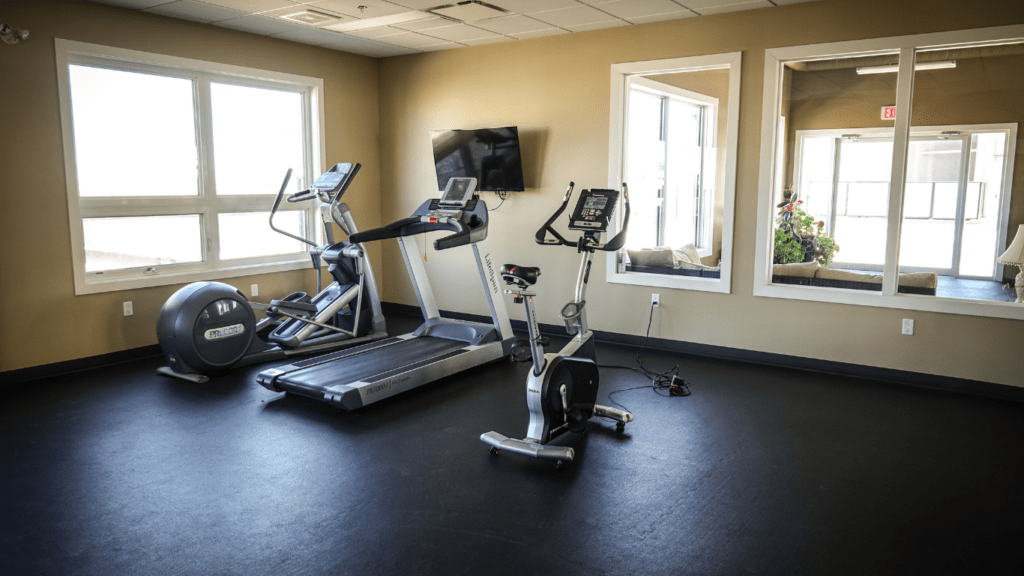What Are Smart Home Gyms?
Smart home gyms use technology to transform traditional workout spaces. They offer diverse workouts through digital platforms and interactive devices.
Defining Smart Home Gyms
A smart home gym integrates technology to provide a personalized exercise experience. It includes equipment like smart mirrors with virtual trainers, connected exercise bikes or treadmills with real-time feedback. Platforms track performance metrics like heart rate and calories burned, tailoring workouts to individual needs.
Features and Technology
These gyms feature advanced technology for enhanced engagement. Interactive displays provide access to virtual classes with live or recorded options. Built-in sensors track progress, while smart algorithms suggest routines based on personal goals. Connectivity with fitness apps and devices creates a seamless workout ecosystem.
Benefits of Smart Home Gyms
Smart home gyms offer numerous advantages that enhance the fitness experience at home. They combine cutting-edge technology with user-friendly features to create an efficient and personalized workout environment.
Convenience and Accessibility
Smart home gyms transform workout routines with unparalleled convenience. Users access a wide range of workouts anytime, eliminating the time spent commuting to traditional gyms. Virtual classes and on-demand sessions fit easily into diverse schedules, making fitness more accessible.
Personalized Workouts
With advanced tech, smart home gyms deliver tailored workouts to meet individual needs. Equipment adapts routines based on user preferences and fitness goals, providing a unique experience. Smart mirrors and connected devices like exercise bikes offer customized training plans, boosting motivation and effectiveness.
Data Tracking and Progress Monitoring
Smart home gym technology excels in tracking and monitoring progress. Sensors and smart algorithms gather data on performance, allowing easy tracking of workout metrics. Integrated with fitness apps, these systems provide insights on areas for improvement, driving consistent progress toward goals.
Potential Drawbacks of Smart Home Gyms
Smart home gyms offer cutting-edge fitness experiences but come with certain drawbacks. It’s important to assess these potential issues before deciding on your investment.
Cost Considerations
Investing in smart home gyms can be expensive. The initial cost of equipment like smart mirrors and connected treadmills ranges from $1,000 to $5,000. Additional subscriptions for fitness apps or virtual classes often cost $10 to $50 monthly. Replacement parts can also add ongoing expenses.
Space Requirements
Smart gym equipment requires a dedicated area at home. Devices like treadmills and exercise bikes need significant space for safe and effective use. In smaller homes or apartments, finding suitable space might be challenging, especially in cluttered areas.
Technology Limitations
- Smart home gyms depend on technology, which can present limitations.
- Connectivity issues occur if internet service is unreliable, disrupting workouts.
- Software updates may also render some features temporarily inaccessible.
- As technology evolves, equipment may become obsolete quickly, requiring upgrades to maintain functionality.
Comparing Smart Home Gyms to Traditional Options

Smart home gyms offer distinct advantages over traditional fitness avenues. Both present unique experiences for different user preferences and requirements.
Cost vs. Value
Smart home gyms require a higher upfront investment. Equipment ranges from $1,000 to $5,000, not including subscription services. Traditional gyms charge monthly fees, often between $30 and $100. Over time, smart gyms can offer savings by eliminating ongoing membership dues and travel expenses. Considering these factors, smart gyms present a long-term value proposition for committed fitness enthusiasts.
Variety of Exercises and Equipment
- Smart gyms provide diverse workouts through connected machines and interactive displays.
- Smart mirrors and virtual classes, catering to varied fitness interests from strength training to yoga.
- Traditional gyms offer a wide array of machines and weights, allowing more flexibility and customization.
- For users prioritizing tech-enhanced experiences, smart gyms deliver a dynamic and personalized exercise environment.
Popular Smart Home Gym Options
Smart home gyms offer tailored fitness experiences through innovative technology. Here’s a look at some leading options transforming home workouts.
Peloton
Peloton initially gained fame with its connected exercise bikes, using live and on-demand classes to enhance workout motivation. Its investment includes a sturdy bike with a built-in screen for streaming workouts, creating an engaging and immersive experience. Peloton offers additional equipment like treadmills and rowing machines, all integrated within its extensive app ecosystem. Monthly subscriptions unlock access to a variety of fitness classes ranging from cycling to strength training.
Tonal
Tonal revolutionizes strength training with its compact, wall-mounted design and digital weights. This smart gym uses electromagnetic resistance to offer personalized strength workouts. Its adaptive resistance system adjusts weights in real-time, ensuring consistent challenge and progress. Tonal’s guided workouts come from professional trainers delivered through a large touchscreen interface. Users receive feedback and recommendations, allowing machine learning algorithms to tailor workouts to individual goals.
Mirror
Mirror stands out as a sleek, full-length device that doubles as a mirror when not in use. It transforms into an interactive workout display offering hundreds of live and on-demand classes. Users engage in activities like:
- yoga
- cardio
- boxing
all supported by a real-time performance feedback feature. Mirror also allows for personalized training sessions through its integrated app, making it an aesthetically pleasing addition to a home gym. The subscription model grants access to comprehensive fitness routines, ensuring a well-rounded workout experience.

 Milla Collings plays a pivotal role at Make Athlete Action, where her expertise in sports nutrition and conditioning has been invaluable in crafting content that resonates with athletes and fitness enthusiasts alike. With a deep understanding of how nutrition impacts performance, Milla has contributed extensively to the platform’s nutrition and conditioning segments, ensuring that athletes receive practical, science-backed advice. Her commitment to excellence has helped elevate Make Athlete Action as a trusted source of knowledge for anyone looking to optimize their diet and achieve their peak performance.
Milla Collings plays a pivotal role at Make Athlete Action, where her expertise in sports nutrition and conditioning has been invaluable in crafting content that resonates with athletes and fitness enthusiasts alike. With a deep understanding of how nutrition impacts performance, Milla has contributed extensively to the platform’s nutrition and conditioning segments, ensuring that athletes receive practical, science-backed advice. Her commitment to excellence has helped elevate Make Athlete Action as a trusted source of knowledge for anyone looking to optimize their diet and achieve their peak performance.